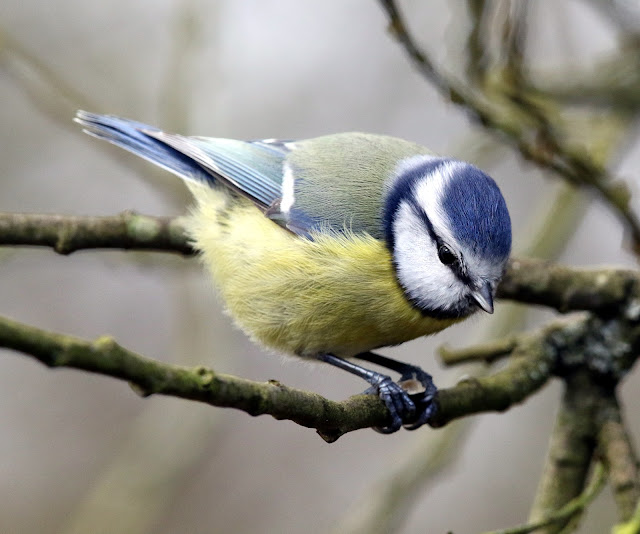After
what seems an age of grey, wet, windy, bitterly cold days; days that last a
week and weeks that last a month, we arrived at something of an oasis last week,
a most pleasant and unseasonal smiley face. Let’s have an emoji 😎.
There that’s better. Three days, yes three whole days of unbroken, brilliant
sunshine. And what’s more the sun actually had the strength to warm us. Oh,
it’s like a sumptuous meal of succulent, melt in your mouth, prime beef after
half a year of enforced starvation; an uplifting of the soul after an
oppressive spell of enslavement. Overreaction? Nah! There’s nothing like a
British winter to make you appreciate even a few minutes of that golden
celestial orb. But three whole days folks! Boy have we been spoiled rotten.
Anyway,
I was lucky enough to be able to take advantage of this bonanza to bask in the
glory of the East Anglian countryside, its wild spaces and its wildlife. Aren’t
I lucky? 😁, oh there we go again. So join us as Thursday
(15th) saw me strolling around Minsmere and Dunwich with much treasured friends.
On this occasion we had the privilege of a close encounter with a 1st winter
glaucous gull that patrolled the pebble encrusted beach looking for tasty
morsels. It’s not often you can share space with one of these caramel coloured
strays so far south, best then to think yourself lucky and just soak it up.
Next we sauntered around Dunwich Heath obtaining brief, distant, but
nonetheless conclusive views of a couple of Dartford warblers that tazzed away
from us on whirring wings. One did sit obligingly atop a sprig of heather
enabling us to confirm its identity. Charming little birds.
Gather
round, as we sit sipping tea at the coastguard cottages, chatting and jesting,
closing our eyes to absorb the warming rays afforded by this late winter
respite. And then we have another treat in store, for after our fill of PG Tips
we can stroll back to the path through the reed beds, claim our place on the
only bench in sight and await the spectacle. It doesn’t disappoint. But
fearfully as the sun slowly sets behind us we do wonder if perhaps the birds
have forsaken us tonight. It happened at Strumpshaw earlier this winter when
somehow 15,000 of this species decided collectively to vacate their roosting
spot to a bird. One night thousands chortling and gossiping; the next nothing.
How is that possible? Was it going to happen this evening? We shouldn’t worry
because as dusk spreads its darkening tendrils across the massed ranks of ochre
reeds the first starlings arrive. An advanced party of a dozen or so circling
the Fen, but then more, many more, appearing from nowhere to swirl and shift across
the paling sky. But this mass is dwarfed by the arrival of a vast cloud of
flying dots that arrived from the north to swell the ranks tenfold. This
gathering, a fantastic, breath stopping spectacle, smokes around the sky
entertaining a crowd of stationary humans for 20 minutes before piece by piece the throng breaks up to
send a cascade of small dark shapes hurtling into the reeds. Thousands of
individual birds acting as a collective. Stunning and amazing. Hard to think of
a better way to end a day that even as we enjoy a final coffee in the car park
still had residual light lingering in the West. Not enough to prevent the stars
putting on a show; Orion, Cassiopeia, the Plough and countless thousands of
others shine down on us four contended humans. Yes it was a good day.
This Wensum
Valley reserve is so good that it deserved a second visit, so we went back the
following day to enjoy further close encounters with its inhabitants and to
have a proper look at those redpolls. Umm redpolls can be a tricky bunch, but
there’s seemingly more than one kind probing their sharp yellow bills into the
seed feeders. But are they different species or are they simply different forms
of the same species? Who knows? It’s a debate that has divided the birding
community for a long time. But it is what it is: the birds don’t care. In any
event I’m pretty sure I was looking at the standard lesser redpoll as well as
at least one common - hitherto known as ‘mealy’ - redpoll. If you have a mind
or a care you can judge for yourselves.
 |
| Goldfinch and Siskin |
 |
| Lesser Redpoll (top) and Common (mealy) Redpoll (bottom) |
Three
days of sunshine and the world transforms, birdsong resonates through the
woods, snowdrops bloom like a dusting of icing along our road verges and carpet
churchyards, hats and gloves stay rooted in coat pockets. We all know it is
temporary, we all know it will change, but my goodness it is so welcome. A
gentle kiss of spring to remind us that nature is ready to burst forth with all
its passion.














